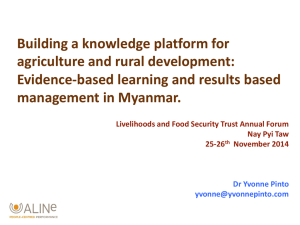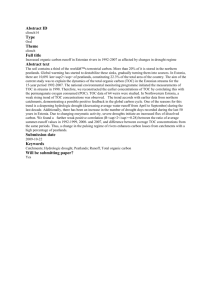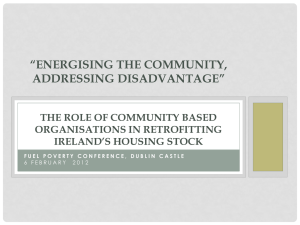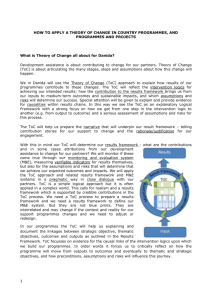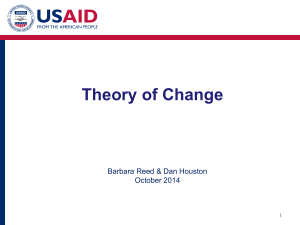introduction to tilitonse revised
advertisement
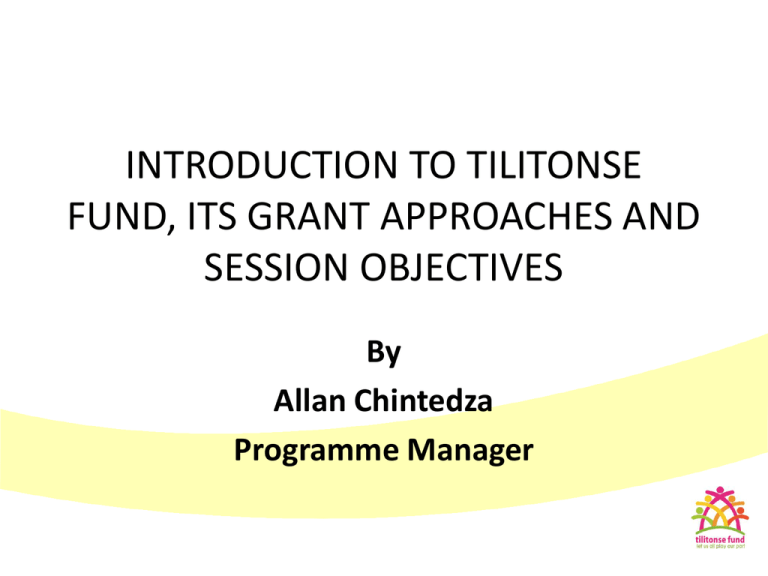
INTRODUCTION TO TILITONSE FUND, ITS GRANT APPROACHES AND SESSION OBJECTIVES By Allan Chintedza Programme Manager Setting the Context for a Community Based Organisation Window Objectives of session – to enable potential bidders and applicants to fully understand requirements especially in relation to this new funding window, what is the rationale and what are our expectations. Setting the context for a CBO Window(continued) • • The first three sessions are complimentary and are meant to outline the background and underlying principles.I am here to start you-off with an understanding of the Tilitonse Fund and what we stand for. Fannie will go deeper to guide you with elements and tools that you should consider when putting together your ideas.Francis will go further by expanding on how you can bring out ideas that will bring meaningful change to the majority of Malawians in the rural communities of the country. The last sessions will take you through the actual Tilitonse technical requirements, the dos and donts that can make your CN application either successful or not Background and grant making approaches • • Tilitonse is a multi-donor pooled grant making facility supporting more accountable, responsive and inclusive governance in Malawi through grants to projects led by civil society and other local organisations(CBOs). It is meant to be a Civil Society support fund with a difference. It is designed in a way to reflect and build upon knowledge of political economy, and this encourages an approach towards building coalitions around issues of interest. The approach is expected to enhance civil society influence by connecting them in with other actors they don’t normally work with, such as the private sector, govt.,consumer and middle class groups, and with business interests. Tilitonse Grant Making Approaches(continued) • Started-off with Accelerated Grant Window which did not follow due process and PEA. 7 grantees were approved. • General Open Call 1 was based on 4 Tilitonse outputs. Bidders selected their problem areas in relation to Tilitonse outputs/Result Areas. Concept Notes were shortlisted, then proposal development and approval. Evaluation criteria emphasized alignment to ToC and PEA. Proposal development assumed incorporation of PEA and ToC by bidders. Tilitonse Grant making Approaches (continued) • Thematic Call – identification of issues based on PEA • Unlike GOC – PEA already done by the secretariat using a group of people from the University and issues linked to ToC • It was not OPEN but restricted to those who are already in the identified areas AND can work with other players(coalitions) Tilitonse Grant making Approaches (continued) • The other Grant making window is called Strategic opportunities. Originally this was supposed to identify issues through research resulting in Issue Based Projects. This was scrapped and in a way has been replaced by the thematic call. • There is a proposal to establish a rapid response window under this, which is still being looked into depending on availability of funding Tilitonse Grant Making Approaches (continued) • • • • CBO Window rationale – A total of 47 organisations given grants through the three windows. Geographical coverage – country wide with exception of Likoma. Out of these only one CBO(Nkhadze Youth – Balaka). Reasons included lack of capacity to prepare CN/proposal according to our requirements, lack of understanding of the underlying principles. We have decided to do something about this BECAUSE you have a constituency – you represent majority of Malawians at the local level. CBOs definition is broader More flexible, approval at CN stage and then development of proposal Proposal development guided by Secretariat through Mentors. New capacity development approach- moving away from training and workshops into guidance and coaching. If your CN is approved, we will get expertise to help you put together a proposal. They will walk with you – together – to incorporate the underlying principles that emphasize establishment of root cause and identification of actual problem, how meaningful change can happen. Existing ToC “Increased levels of citizen action, citizen-state interaction and participatory governance, especially at community and district levels, can create increased responsiveness in duty bearers and power holders in and outside government that will lead to improved delivery of basic services, greater social inclusion, and increased accountability.” Theory of Change • • • • • We have found out that voice alone may not do it. There is increasing evidence that there is need for action involving various players with POWER and influence. We need to understand the dynamics behind the ToC. How does change happen and how can we support that process? Who drives change? Change is driven when groups with sufficient POWER come together around issues or problems of mutual concern to them (Fannie and Francis to come more on this) Need to choose the right issues (does not happen just as result of coming together) Change is not purely driven by agents and organisations • • • • These are constrained by institutions and structural interests Empowerment of CS results not just from “capacity building” but also through building connections to more powerful influencers Must be driven by PE analysis Not particularly by donor preferences Theory of Change Diagram • Tilitonse grant making underpinned by ToC(Francis) • Risk identification • Risk Mitigation – PEA • Grant making windows(Activities and outputs) • Outcomes and impact Empowering Civil Society • Civil Society is generally not very powerful • Tilitonse has incorporated capacity building so we can enhance their power. Once a grant is approved we undertake a capacity assessment of the lead organisation and if gaps are identified, we develop a CAP which is costed separately and implemented. This however is being re-visited to ensure morevalue for money and better impact on Civil Society as a sector! Issues for this CBO Window • Based on four outputs. Most CSOs have concentrated on first two. More service delivery oriented. Last two are more on governance issues affecting people at the lower end where CBOs are best placed since closer to the people. We are encouraging CBOs to tackle these considering that they will have Mentors to help them with the proposal development. • • Tilitonse aims to deliver the following four outputs: Capacity of CSOs to enable citizens, particularly poor and excluded groups, to claim their rights increased. Access to information on rights, entitlements and responsibilities increased particularly for poor and excluded citizens. Monitoring by Malawian organizations of policy and budget commitments, service delivery and public resource management strengthened. The engagement of Malawian organizations in influencing policies, strategies and resource allocations at local and national levels improved. • • • THANK YOU VERY MUCH!


